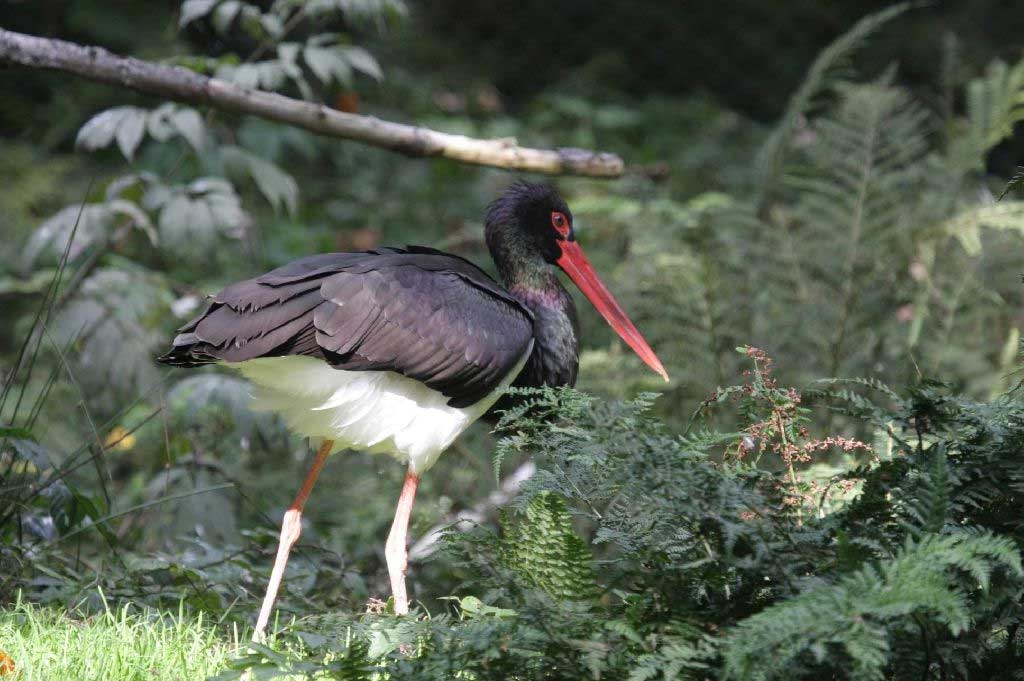
Black storks usually build their nests in remote, quiet places high in the treetops.
The black stork lives in forests and uses towering treetops for nesting.
The black stork is much shyer than its white relative, but there has lately been an increase in the number of storks who nest more openly and closer to human settlements due to population growth.
The bird regularly repairs and expands its tree nest, sometimes using nests of birds of prey as the foundation. One partner brings material to the nest, the other completes it.
Aged three, when black storks mature, their beaks and legs, initially grey, turn bright red.
The female lays 2–5 white eggs, which incubate for about 30 days.
The black stork forages in small water courses, hunting fish up to 25 cm in size; it also eats insects, frogs, and newts, as well as small rodents and young birds living in damp meadows. The birds bring food to their young from distances up to 10 km.
In September, they leave for their wintering grounds in Sub-Saharan Africa.